Introduction
Over the past 12 months we have seen further growth within the cloud, as many organisations scale or create new digital services in response to the coronavirus pandemic. Improved speed and agility has allowed businesses to pivot where traditional siloed infrastructure may have caused them to stall.
As the usage of cloud services expands, standardising and consolidating cloud tooling becomes important for financial management, operational governance, and security and compliance. Visibility into distributed system architectures across many accounts or subscriptions, or even multi-cloud, is another key challenge. For some customers cloud workloads are not optimised or configured to best standards, many will spend more than their anticipated budget, and others may accidentally expose data or services.
Those with an established cloud strategy may decide to implement a Cloud Centre of Excellence (CCoE); responsible for cloud operations, security, and financial management. The CCoE will navigate the security and configuration landscape of cloud assets, automating response and remediation to configuration drift or threats. As the team grows in maturity optimisations are made continuously and automatically, inline with the key drivers of the business. This is where CloudHealth comes in.
CloudHealth by VMware is a multi-cloud SaaS solution managing more than $11B of public cloud spend for over 10,000 customers. CloudHealth accelerates business transformation in the cloud by providing a single platform solution for visibility into AWS, Microsoft Azure, Google Cloud Platform, Oracle Cloud Infrastructure, VMware Cloud on AWS, and on-premises VMware based environments. The key functionality is broken down into the 2 products we’ll look at below.
CloudHealth Multicloud Platform
CloudHealth takes data from cloud platforms, data centres, and third party tools for application, security, and configuration management. Data is ingested and aggregated using CloudHealth’s integrated data layer, which performs analysis on usage, performance, cost, and security posture. CloudHealth becomes a single source for multi-cloud management across environments, strengthening security and compliance, consolidating management, and improving collaboration between previously siloed teams of people and tools.
Data and assets can be categorised by tags or other metadata, and viewed in logical business groups known as perspectives . Perspectives provide a breakdown for cost allocation using dynamic groups such as line of business, department, cost centre, or project. The output can be used to identify trends and build dashboards and reports. This approach simplifies financial management, saves time, aids with budgeting and forecasting, and encourages accountability through accurate chargeback or showback.
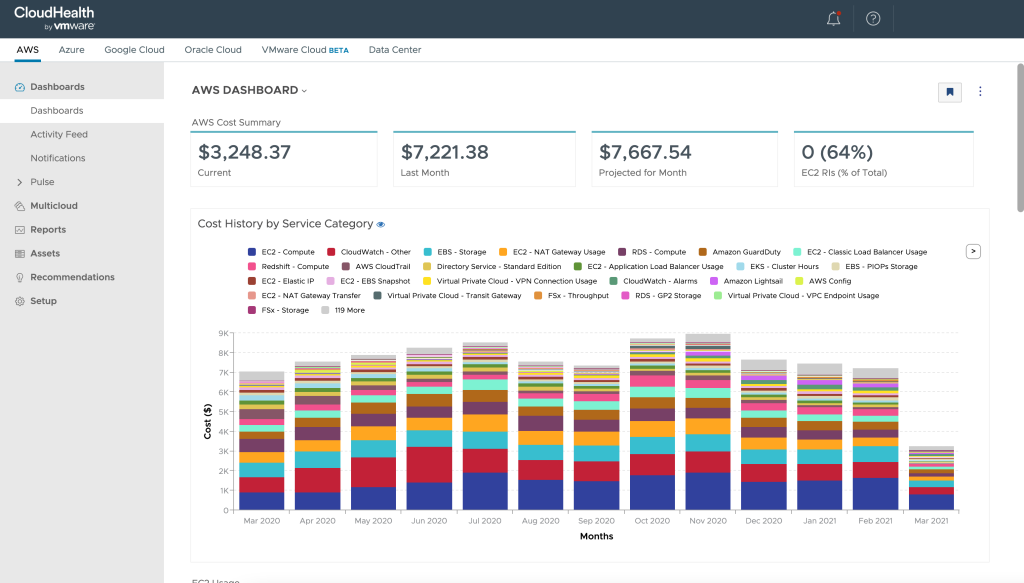
Whilst visibility is great, to really have a positive impact on operations we need to know what to do with the data collected. CloudHealth presents back cost optimisation recommendations and security risks, but can also carry out remediation actions automatically.
Cost optimisation is where you can save money, using AWS as an example, based on things like; EC2 instances that are oversized or on an inefficient purchase plan, elastic IP addresses or EBS volumes that are not attached to any resources, snapshots that have not been deleted. In the physical on-premises world all of these issues were common as part of VM sprawl, they impacted capacity planning and resource consumption but were mostly hidden or swallowed as part of the wider infrastructure cost. As organisations shift from large capital investments to ongoing revenue and consumption based pricing, oversized or unused resources literally convert to money going out of the door every single month.
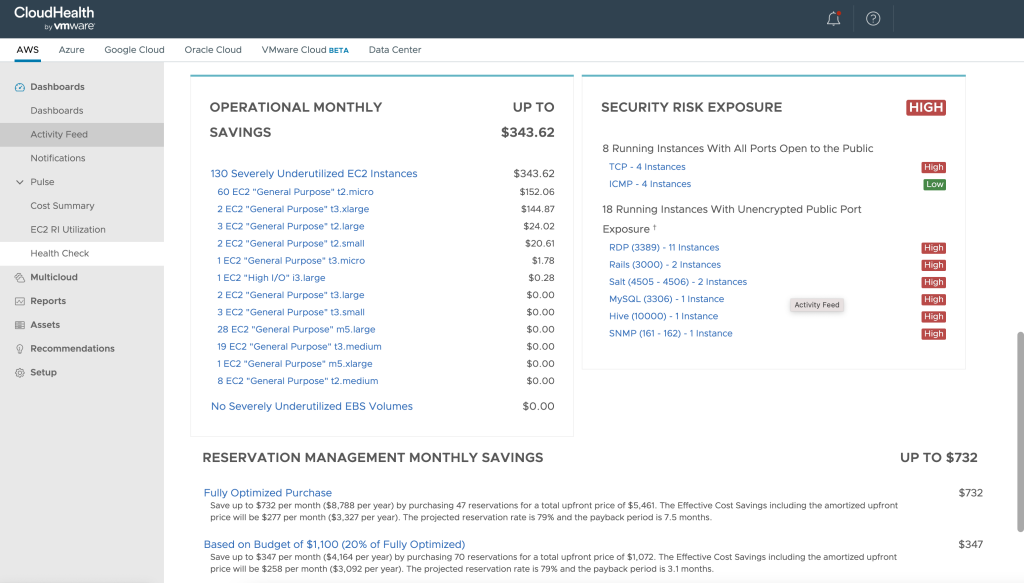
Recommendations and actions are where CloudHealth carries out remediation for incorrectly configured or under-utilised resources. Policies can also be used to define desired states and ensure operational compliance. For example, an organisation may want to report on untagged resources, connected accounts, or open ports. The number of available actions currently appears to only cover AWS and Azure, but with support recently added for Oracle Cloud Infrastructure, and Google Cloud Platform before that, hopefully this functionality will continue to be built out.
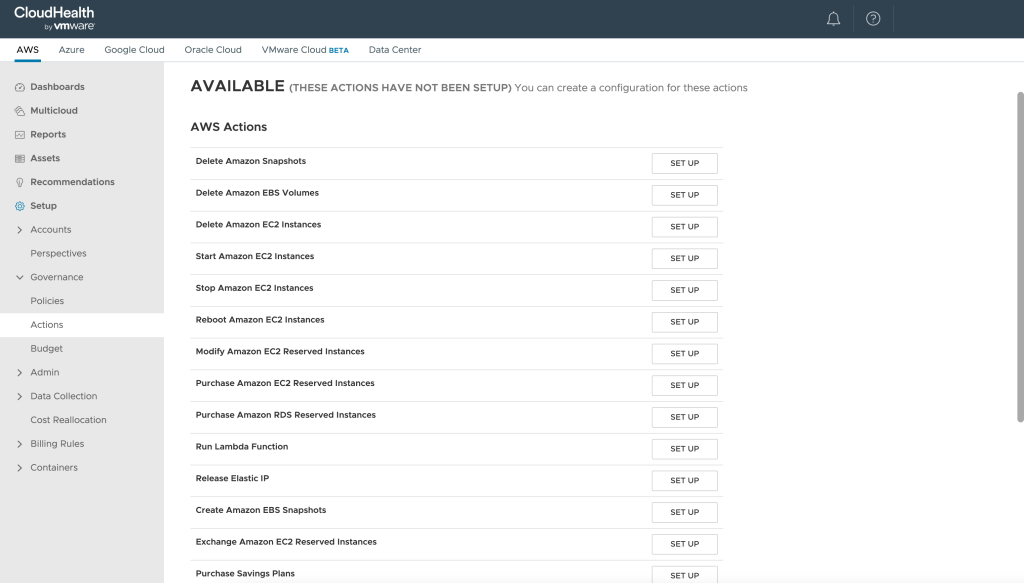
At the time of writing CloudHealth is priced based on cloud spend, and can be purchased as a 1, 2, or 3 year prepaid commitment, or variable pricing based on the previous months cloud spend. A free trial is available to uncover ROI in your own environment from CloudHealth here.
Where VMware environments are in use with vRealize Operations, the CloudHealth management pack for vRealize Operations can be installed. Bringing CloudHealth dashboards and prospects into vROps allows IT ops teams to track on-premises infrastructure and public cloud costs from a single interface. The CloudHealth management pack for vROps can be downloaded from the VMware Marketplace, instructions are here.
CloudHealth Secure State
By default CloudHealth provides real-time information on security risk exposure, but for deep-dive visibility and remediation those who are serious about security will want to look at Secure State. CloudHealth Secure State is available with CloudHealth or standalone, and currently supports AWS, Azure, and GCP.
Dashboards within CloudHealth Secure State enable at-a-glance checks on security posture and compliance. There are over 700 built-in security rules and compliance frameworks that can be used as security guardrails, with the ability to add custom rules and frameworks on top.
As systems become distributed over multiple accounts, subscriptions, or even clouds, the dynamics of securing an organisations assets shift significantly. Previously all services were contained within a data centre, firstly using perimeter firewalls and then with micro-segmentation. IT teams were generally in control and had visibility throughout the corporate network. Nowadays a developer or user responsible for a service can potentially open applications or data to the public, either on purpose or by accident. Cloud security guardrails form an important baseline for security posture and cloud strategy. Security guardrails are made up of critical must-have configurations in policies with auto-remediation actions attached, they help avoid mistakes or configuration drift to ultimately reduce security risk.
CloudHealth Secure State gives further visibility into resource relationships and context, using the Explore UI. Explore enables a powerful model of multi-cloud or account architectures, with visual topology diagrams of complex environments. Cyber security analysts or operations centres can drill down into individual resources with all interoperable components and dependencies already mapped out.
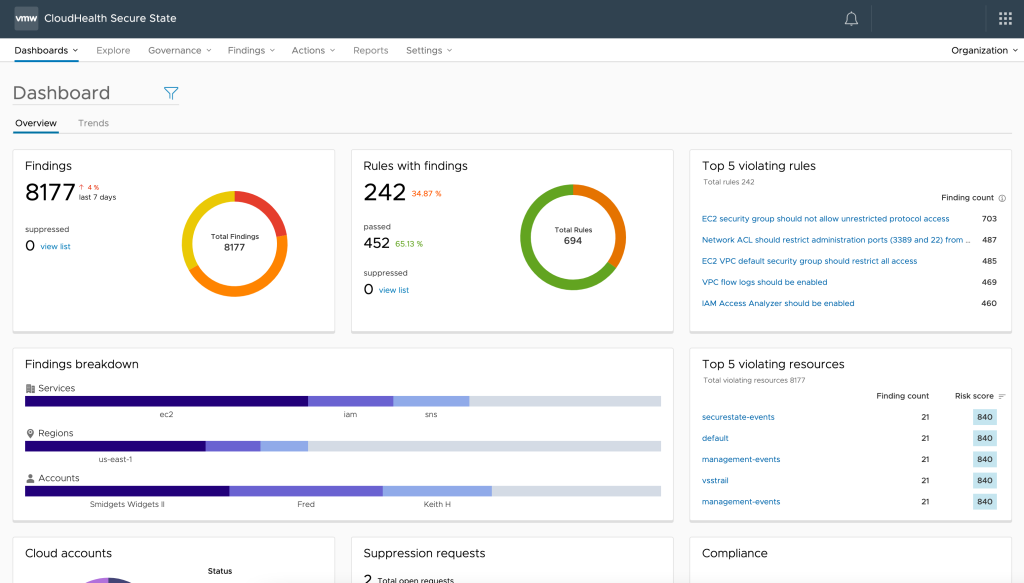
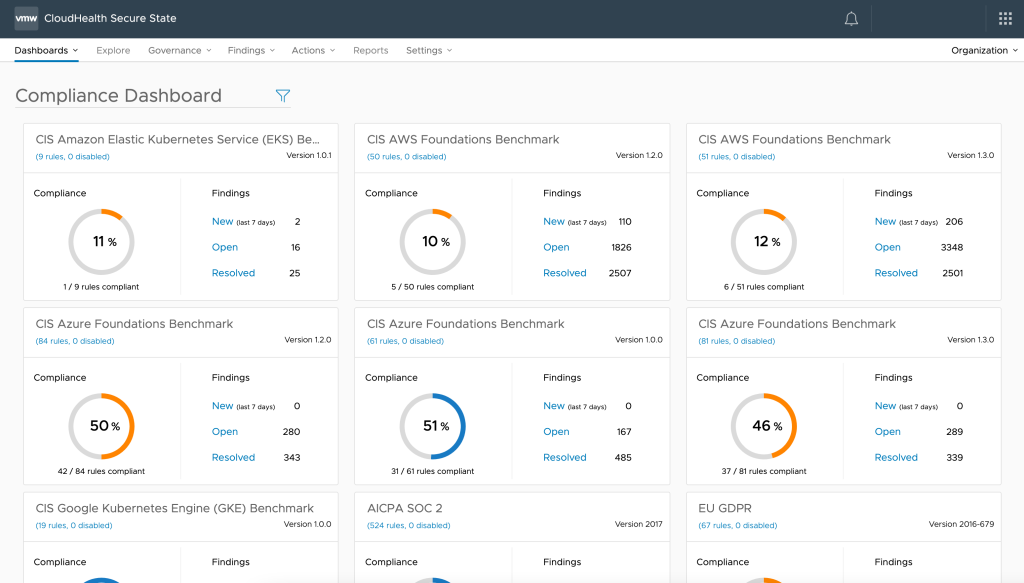
Featured image by Scott Webb on Unsplash

4 thoughts on “How CloudHealth Optimises and Secures Your Cloud Assets”